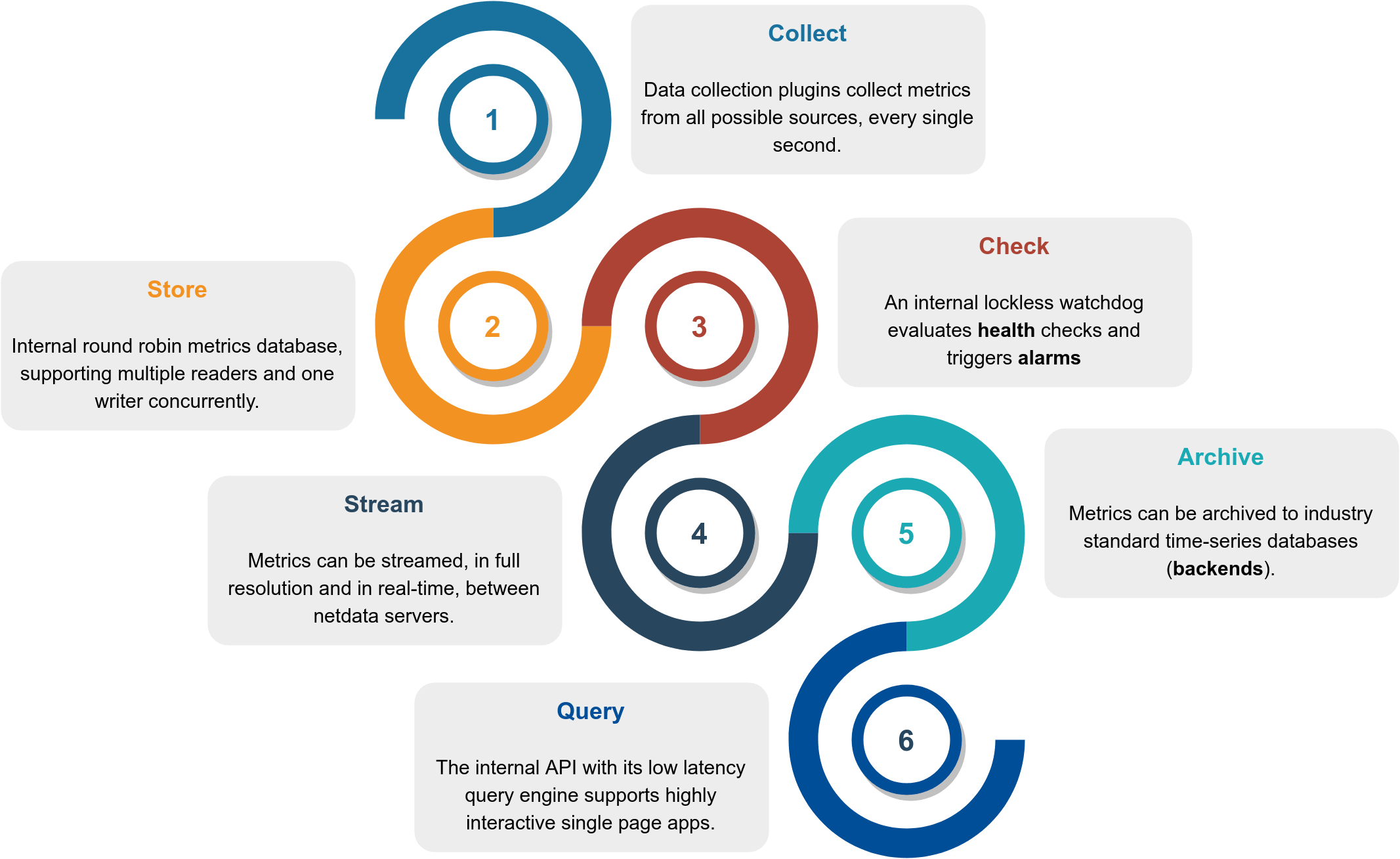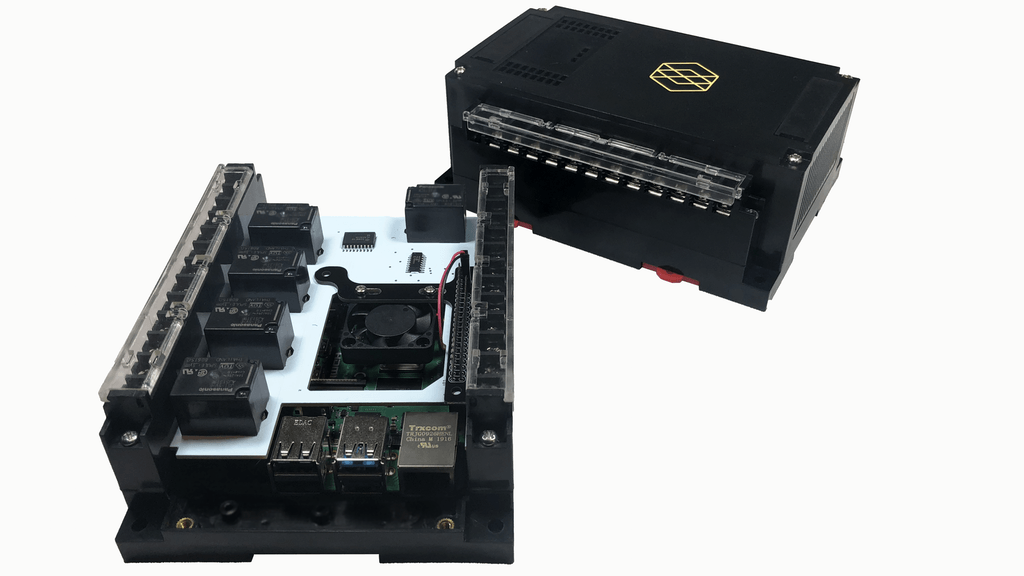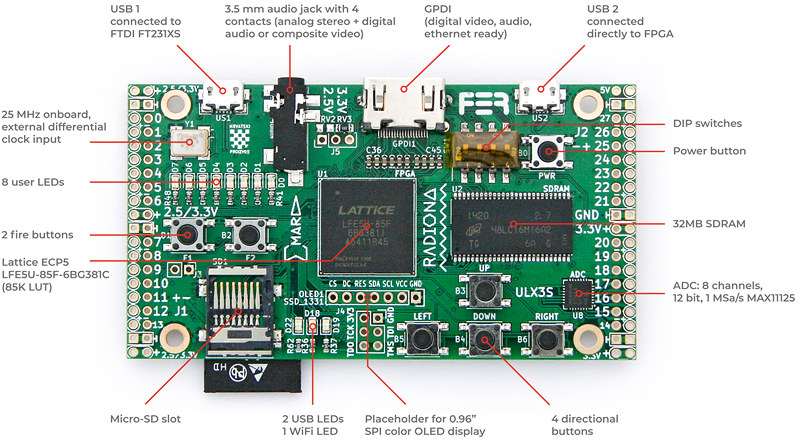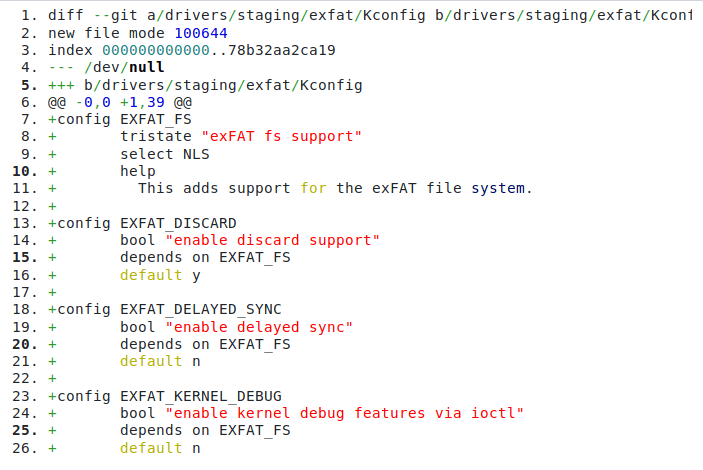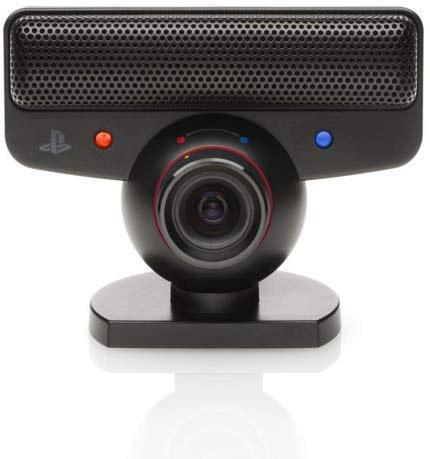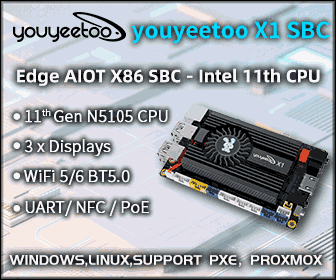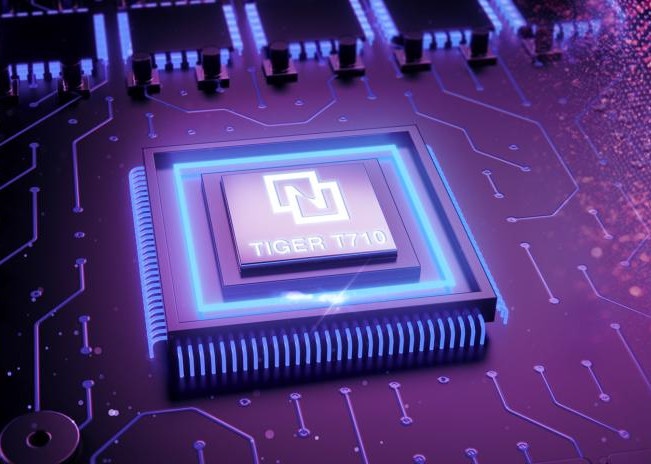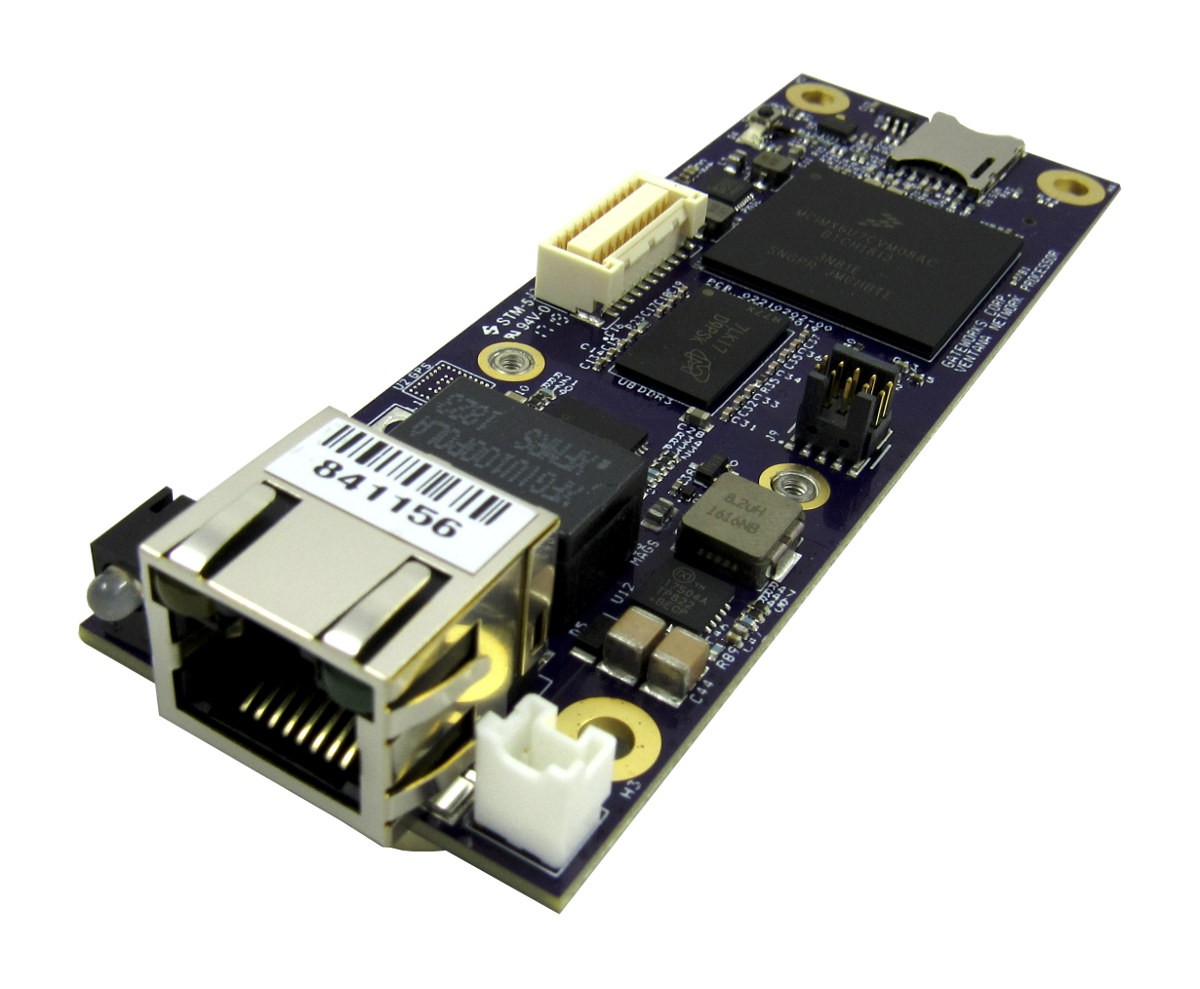Netdata is a real-time open source monitoring tool, that generates hundreds of metrics of performance and health monitoring parameters. Netdata is capable of visualizing this data with real-time capabilities along with alerts and notifications. This monitoring agent can be installed in all variant of Linux systems, Mac OS, FreeBSD and in Raspberry Pi . Netdata provides options for archiving the metrics to a remote server by using TimeSeries Databases and processing engines, and can be visualized using Grafana or other tools. Architecture Overview Metrics collector Fetches various system & health monitoring parameters (uptime, CPU load, CPU usage, RAM utilization, disk usage etc.) . Fetches application metrics including web servers, databases, containers, etc… Netdata’s Internal plugins collect most of the metrics from standard Linux system parameters such as /proc, /sys and other Linux kernel sources External plugins contains ready to use plugins developed by using other programing language and interfaced to […]
How to Sandbox an arm64 GCC on aarch64 Hardware with armv7 Userspace
CNXSoft: Guest post by Blu about setting up arm64 toolchain on 64-bit Arm hardware running a 32-bit Arm (Armv7) rootfs. Life is short and industry progress is never fast enough in areas we care about. That’s an observation most of us are familiar with. One would think that by now most aarch64 desktops would be running arm64 environments, with multi-arch support when needed. Alas, as of late 2019, chromeOS on aarch64 is still shipping an aarch64 kernel and an armhf userspace. And despite the fine job by the good folks at chromebrew, an aarch64 chromeOS machine in dev mode ‒ an otherwise excellent road-warrior ride, is stuck with 32-bit armhf. Is that a problem, some may ask? Yes, it is ‒ aarch64 is the objectively better arm ISA outside of MCUs, from gen-purpose code to all kinds of ISA extensions, SIMD in particular. That shows in contemporary compiler support and […]
Pi-oT Raspberry Pi Add-on Board Targets Commercial & Industrial IoT Automation (Crowdfunding)
USA Based Startup Builds RPi Add-on Pi-oT, a Cleveland based startup has launched a Kickstarter campaign for a Raspberry Pi add-on for commercial and industrial IoT automation. The unit is a full mountable chassis with fan and DIN-rail that extends the Pi’s GPIO with 26-pin terminal connectors and provides 5x relays, 8x ADCs, and power outputs. We have reported on a variety of uses for the Raspberry Pi SBC, from home automation to development in IoT, to hobby projects, and in education settings. It is not surprising to see an automation module developed for IoT industrial applications around the popular and powerful SBC. The Choices The Kickstarter campaign has passed its low initial target and is set to ship at the end of October. There is an early launch discount on the unit’s price of $40 for commercial and $50 for industrial backers. That early bird type special is 15% […]
ULX3S Education Board is Powered by Lattice Semi ECP5 FPGA & ESP32 WiFi/BLE Module
A few days ago, we covered the KiCAD designed OrangeCrab open-source hardware board powered by a Lattice Semi ECP5 FPGA, and compliant with Adafruit Feather form factor. It’s turned out there’s another Lattice Semi ECP5 FPGA board that’s also designed with KiCAD and open source hardware. Radiona ULX3S differs are it’s larger and exposes more I/Os since it was specifically designed to meet the meets of the digital logic course at the Faculty of Electrical Engineering and Computing (FER) of the University of Zagreb in Croatia. ULX3S specifications: FPGA – Lattice ECP5 LFE5U-85F-6BG381C with 84K LUT System Memory – 32MB SDRAM @ 166 MHz Storage – 4–16MB Quad-SPI Flash for FPGA config and user data storage; MicroSD slot Audio – 3.5 mm jack with 4 contacts (analog stereo + digital audio or composite video) Video – Digital video (GPDI General-Purpose Diferential Interface) with 3.3V-5V I2C bidirectional level shifter Display – […]
Microsoft to Support exFAT File System in Linux, Releases exFAT Specification
Microsoft’s exFAT file system is quite popular for removable mass storage devices such as SD cards and USB flash drives as it’s supported in Windows, and many consumers devices such as cameras can handle Microsoft’s patented file system. The “patent” part causes an issue in Linux, as companies need to license it in order to ship it in their products or operating systems image. I recently re-installed Ubuntu 18.04 on my laptop, and if I reinsert my “test” USB drive: BTRFS, EXT-4, and NTFS partitions all mount automatically, but not the exFAT one. If I click on the partition, I get this message: That’s because Canonical does not provide exFAT by default in Ubuntu due to legal issues. It’s however easy enough for the user to install exFAT utilities
|
1 |
sudo apt install exfat-fuse exfat-utils |
The drive will mount successfully:
|
1 2 |
mount | grep -i exfat /dev/sdc3 on /media/jaufranc/USB3_EXFAT type fuseblk (rw,nosuid,nodev,relatime,user_id=0,group_id=0,default_permissions,allow_other,blksize=4096,uhelper=udisks2) |
Note that it’s using FUSE (Filesystem in Userspace), and it’s usually not a problem […]
Using Sony PS3 Eye Camera as an Inexpensive Microphone Array
Almost exactly two years ago to the day, we published an article showing how microphone arrays performed against a single USB microphone, and the latter started to have a poor wake word detection success rate at around 3 meters array even in a silent room, and it got worse with white noise or background music, while the microphone arrays would pick up the wake word with a much higher success rate in all conditions. The price of smart audio development kits varies a lot from $500 for Intel Speech Enabling Developer Kit to $129 for an Allwinner R18-based 3-Mic Far-Field Amazon AVS Development Kit, and $99 for ReSpeaker Core v2. If you’ve already got a Raspberry Pi 3/4 board, you can get cheaper options such as ReSpeaker 4-Mic Array for $25, but nothing beats the price of Sony PS3 Eye camera that comes with a 4 microphone array and sells […]
UNISOC Tiger T710 Processor with NPU for AI Edge Applications Tops AI-Benchmark Leaderboard
Last April, UNISOC introduced Tiger T310 quad-core Cortex-A75/A55 processor for 4G Phone, and the company has now added a new member to their Tiger family with T710 octa-core processor with four Cortex-A75 cores, four Cortex-A55 cores, and a dedicated NPU (Neural-network Processing Unit) for artificial intelligence applications at the edge in the industry, commerce, medical care, home, and education sectors. The company did not setup a product page, so information is really limited. Known features & specifications so far: CPU – 4x Arm Cortex-A75 cores at up to 2.0GHz, 4x Arm Cortex-A55 cores @ 1.8GHz NPU – Heterogeneous dual-core architecture NPU delivering 2.5TOPS per watt GPU – Imagination Technologies PowerVR GM9446 GPU also found in MediaTek Helio P90. The processor supports multiple AI framework formats, including TensorFlow, TensorFlow Lite, Caffe, and multiple AI data formats such as quantization (INT4, INT8, INT16) and floating-point (FP16). Tiger T710 also works with Android […]
Gateworks GW5913 Compact NXP i.MX 6 SBC Supports PoE, GPS and 4G LTE Cellular Connectivity
Gateworks has announced a new Ventana SBC similar to their GW5530 board with 4G LTE connectivity, as GW5913 single board computer follows the same factor, and supports 4G LTE connectivity via mPCIe cards, but it replaces the microSIM card slot by a nanoSIM card socket, and adds a Gigabit Ethernet port with 802.11at PoE support. Gateworks GW5913 specifications: SoC – NXP i.MX 6Dual dual-core Arm Cortex-A9 processor @ 800MHz System Memory – 512MB DDR3-800 SDRAM Storage – 256MB Flash, serial configuration EEPROM Connectivity Gigabit Ethernet with PoE support Optional 4G LTE via high-power (up to 8W) Gen2 Mini-PCIe socket with USB 2.0 and nanoSIM socket Optional u-blox GPS Receiver with MMCX or U.FL Antenna Connector Expansion Connector – USB, UART, I2C, DAC, DIO Misc – Real-Time Clock with battery backup, voltage and temperature monitor, programmable watchdog timer Power Supply – 8 to 60VDC input voltage range via 2-pin power connector […]


